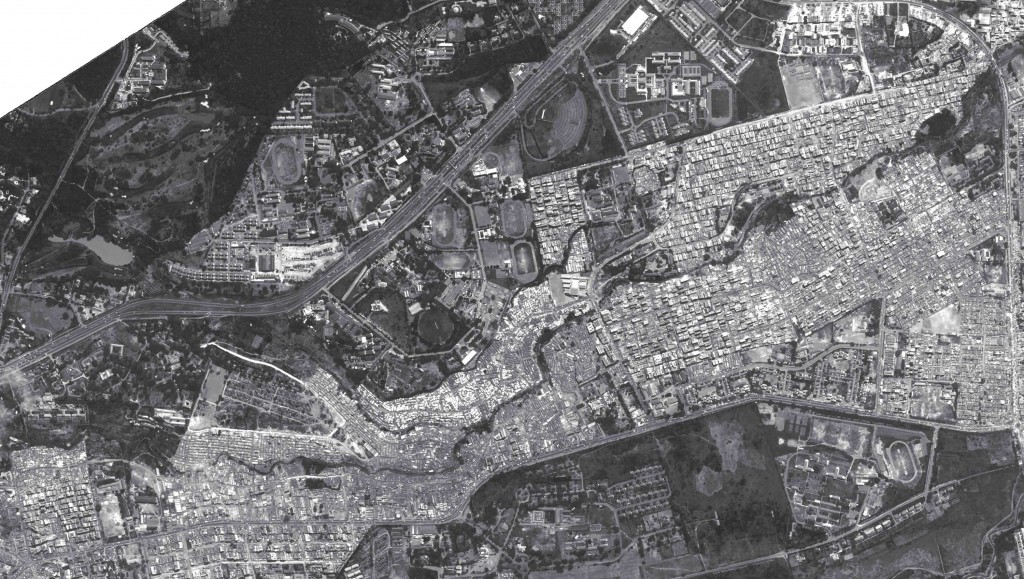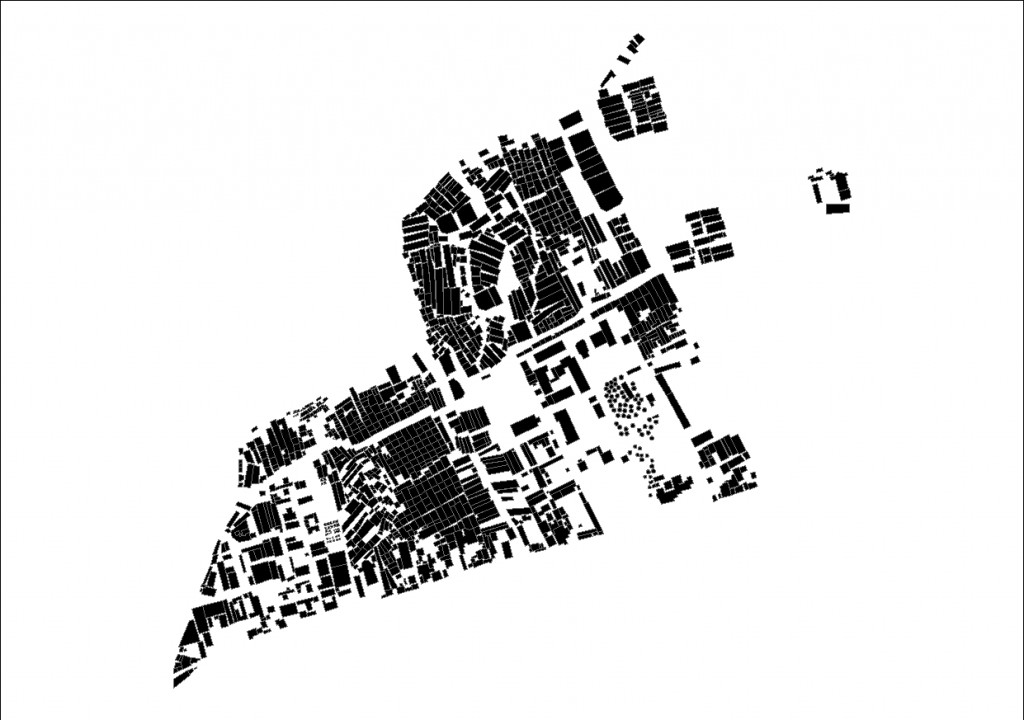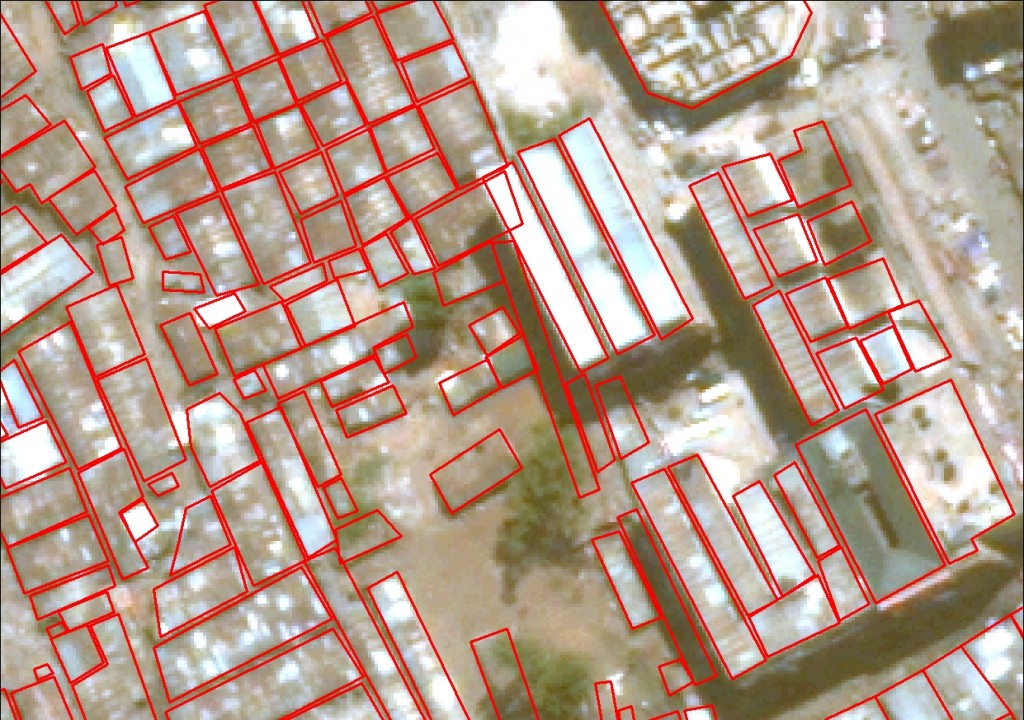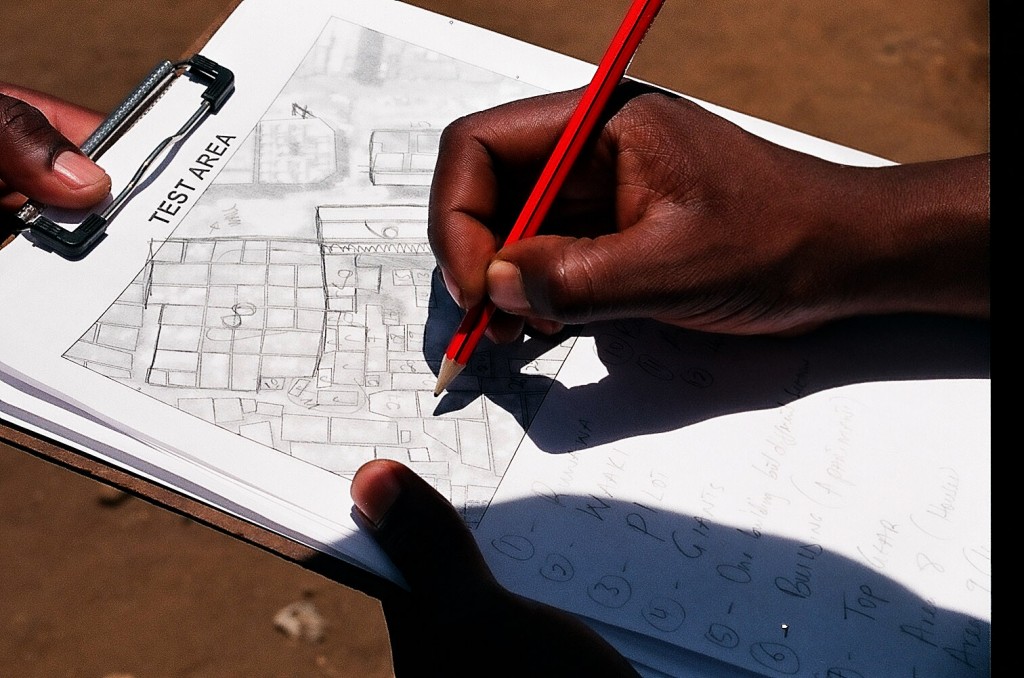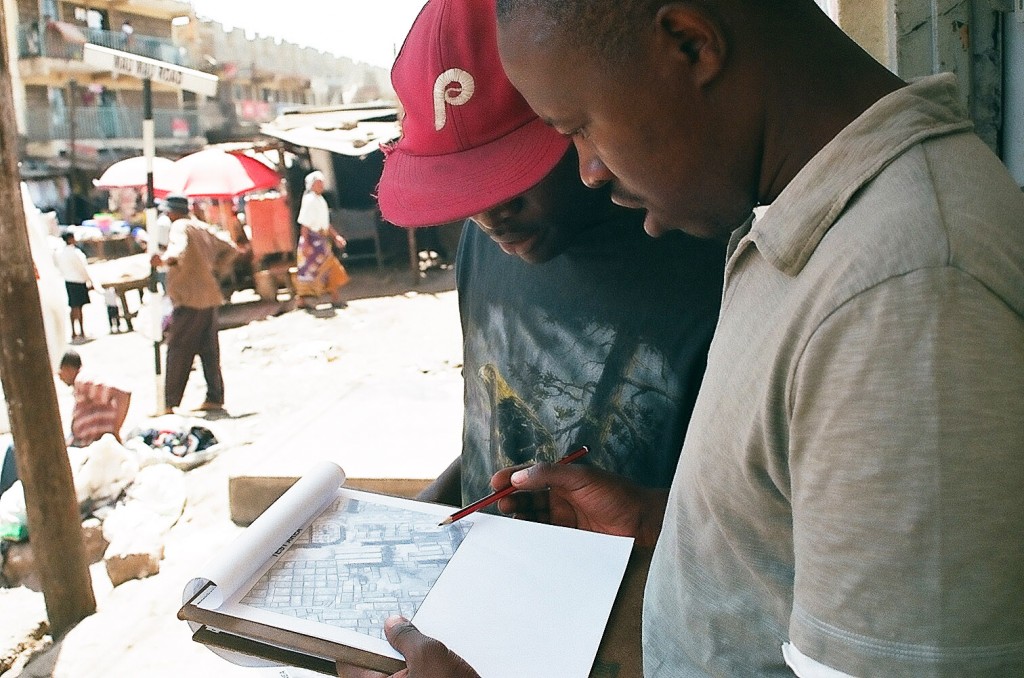The American Association for Advancement of Science (AAAS) donated us a WorldView-2 image (read more) with 6% cloud cover, taken on 30th of June 2010. It covers the areas of Mathare Valley, Korogocho, Kariobangi, Baba Dogo, as well as part of Kasarani, Dandora, and some surrounding areas. Altogether, the imagery is of a broader eastern part of Nairobi, containing the areas with the highest concentration of people in the city.
The image is of course useful in numerous ways, but the first thing we want to use the image for is to create a building extract for the whole area of Mathare! The AAAS showed a great interest in helping us with this issue and is indeed helping us now. The deal was that we set out a test region to begin with so one of their analysts could analyze that area. We would then take a look at it and go to the field to ground check their mapping. If that worked out satisfactorily, they would expand the extraction further to do the whole area.
As said, we first set out the test region for them to analyze. Our focus was on Mathare 10, Thayu, Mabatini, and Mashimoni. We picked the area because it is situated very centrally in Mathare, has different variety of buildings (tin and brick) and is also an interest area of our partners, Plan Kenya and CCS. A day after the area was set we got the first results – the first automated building extract of the area.
A quick look already revealed some of the faultinesses of the automated process like overlaying shapes, crooked shapes of objects, shattered uniform objects and merged diverse objects, digitized/mapped non-existing objects, etc.
Our next “jobâ€, which is currently under way, is ground truth-ing the results. This basically means checking every object in the field and comparing it to the created extracts, than confirming or rejecting certain objects, classifying them, repairing the shape files, digitizing collected (repaired) information and sending it back so they can reset their algorithms.
The biggest challenge is how do we do that practically with limited equipment and resources? We knew from the start that we’ll get the best results if the people who come from the area are the ones ground truth-ing their own area. This is also important because this kind of work basically takes you into the compounds and backyards of houses and you obviously don’t want strangers walking on other people’s backyards.
For the purpose of data collection I created forms, printed them out, bought some pencils, sharpeners and erasers and called Francis and Jackson from Mashimoni to take me around their neighborhoods and give me the feedback – they are two of the mappers who will be the ones leading the project on the ground later, which is why their opinion is crucial.
During the exercise we focused on specifics like:
- We numbered each house in the test area, classified them and added different types of buildings (tin, brick, etc.)
- We repaired shapes of the buildings extracted
- We deleted redundant shape files
- We wrote down names of all known landmarks
The guys also gave me feedback regarding the forms:
- Prepare a bigger map of the whole test area and outline the smaller area on it for better recognition of the area
- Add names of the roads to the forms for better recognition of the area
- Make darker outlines of extracted buildings on the forms
- Add names of landmarks for better recognition of the area
After the ground truth-ing of the area the AAAS will (hopefully) expand the extraction to the whole of Mathare. And then the fun really begins!
